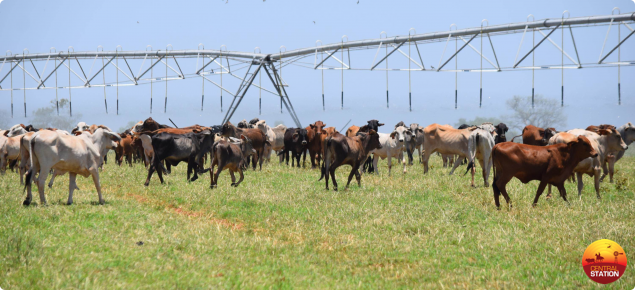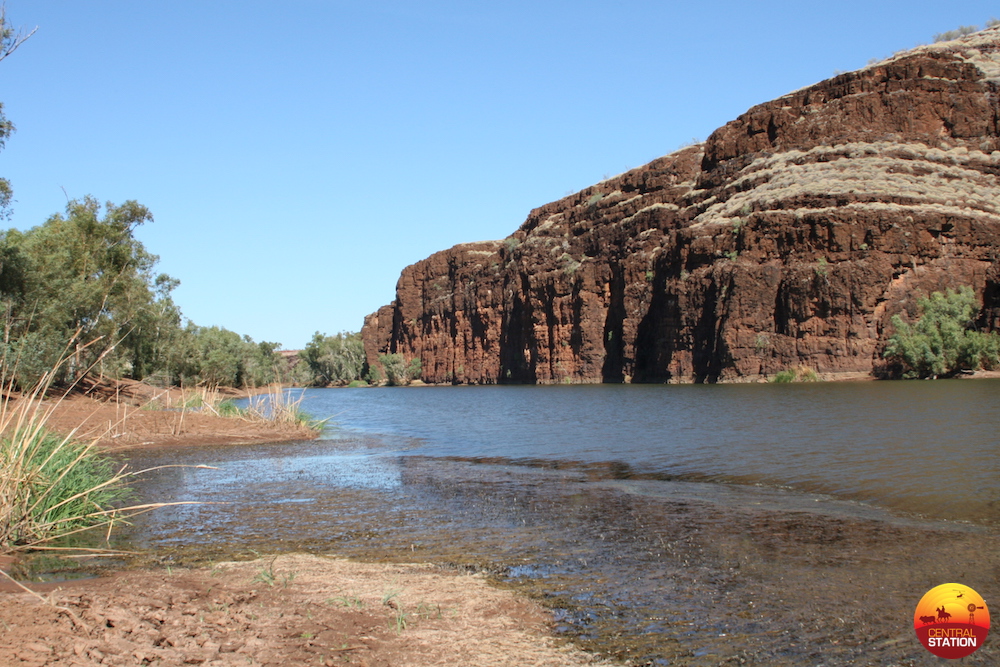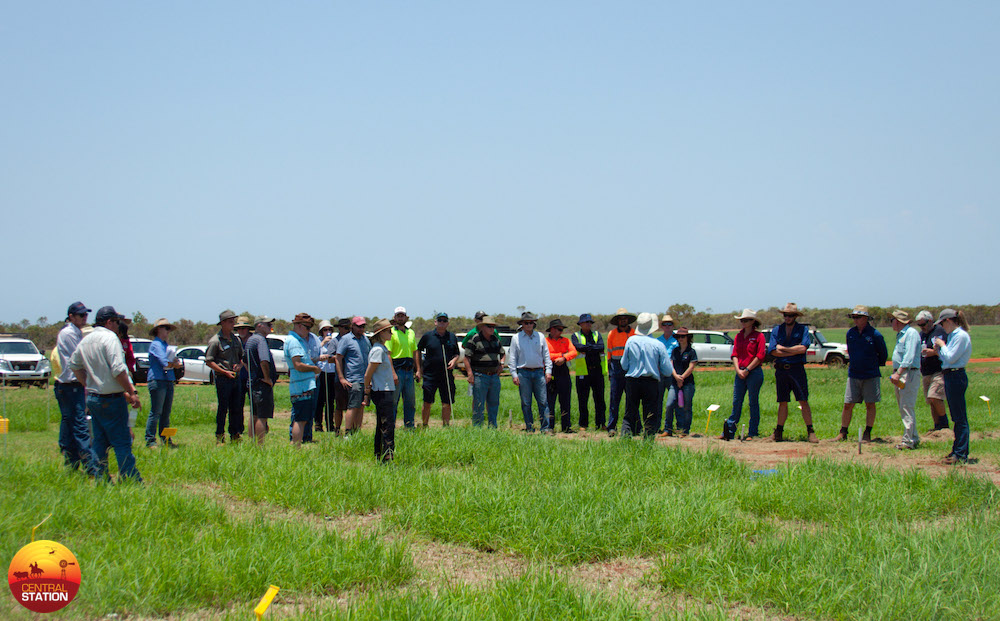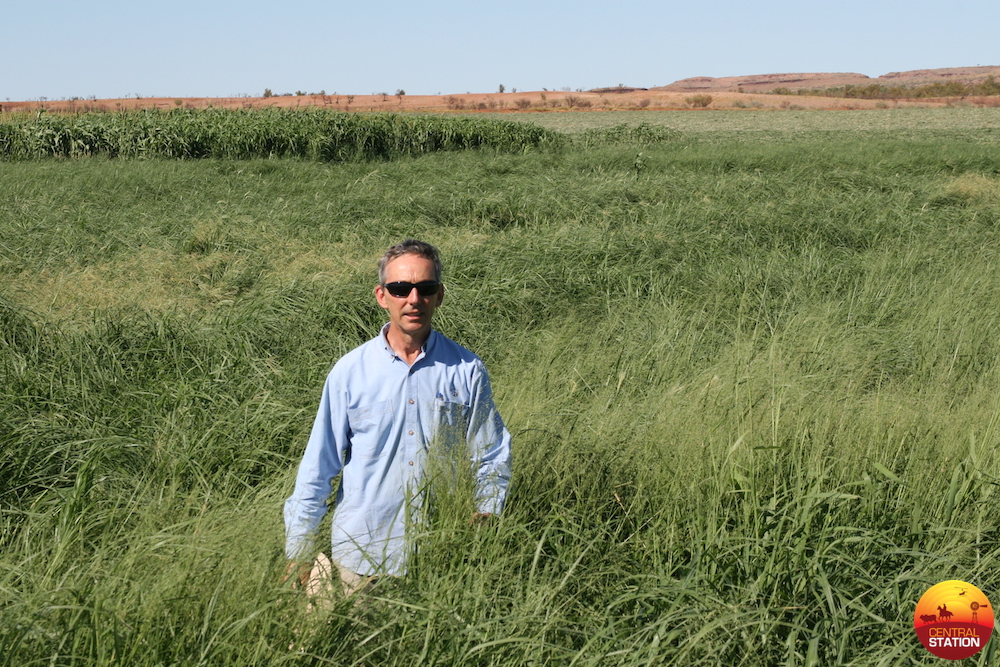Farming in the rangelands
Host: Northern Beef Development project
Written by Geoff Moore, Senior Research Officer, Department of Primary Industries and Regional Development
Hi, my name is Geoff Moore and I am a part of the Mosaic Agriculture team within the Department of Primary Industries and Regional Development’s (DPIRD) Northern Beef Development (NBD) project. The team includes pasture agronomists Clinton Revell and I, together with Broome-based development officer Sam Crouch and technical officer Ijaz Corpus.
You may be thinking, “What is mosaic agriculture?”.
The term refers to small areas of intensive agriculture in an extensive rangelands setting. For example, a centre pivot irrigation system or group of centre pivots surrounded by rangelands.
 Cattle under a pivot on Mowanjum Station.
Cattle under a pivot on Mowanjum Station.
I have been working in the north of Western Australia for four years, which I really enjoy, especially working with cattle producers to integrate intensive pasture and fodder production into an extensive pastoral enterprise. It is a great opportunity, but not without some challenges.
Next week I’m heading on a road trip to a station near Halls Creek, some 700km east of Broome, to sow dryland trials on black cracking clay soils. The wet season has been patchy to date, but if the rain arrives next week, I’ll be hoping to get the trials in quickly as the black soils can go from dusty and dry to sticky mud, overnight.
The team has experienced the many facets of the environment, vast landscapes, wildfires, electrical storms, torrential rain and sweltering heat under the midday sun, except it is only 7am and already over 100°F (38°C) on the old scale.
Good fencing around our trials is a prerequisite, as there are plenty of hungry mouths, especially over the dry season. In addition to cattle, there are ubiquitous grasshoppers, hungry termites, birds aplenty and wallabies ready to dine out on fresh green feed.
The year-round high levels of solar radiation and warm to hot temperatures, combined with irrigation and adequate fertiliser, are a recipe for very high biomass production. This was highlighted at a field walk held at our agronomy site in North Broome in November 2018, where the annual fodder grasses showed daily growth rates of 200 to 250kg dry matter (DM) per hectare, with 3.5 to 5 tonnes/DM biomass after just 19 days of regrowth. You can literally watch the grass grow.
However, the high growth rates and high to extreme temperatures over the October to April period present a challenge, with a trade-off between biomass production and feed quality. High temperatures negatively impact both the growth and quality of temperate species like lucerne. The sub-tropical and tropical species are much better adapted, but they have inherently lower feed quality and the very high growth rates increase the proportion of structural carbohydrates, making them difficult for cattle to digest.
While Rhodes grass is the species most widely grown under irrigation in the north and is well suited to the soils and environment, it can be challenging to manage under grazing. Our trial results clearly show that in order to grow cattle on Rhodes grass, the important measurement is the amount of leaf produced, not the total biomass. The stem provides essentially a maintenance diet (approximately7-8MJ of energy), while the leaf is suitable for growing animals.
It can be difficult to maintain irrigated Rhodes grass pastures with a high level of leafy growth under rotational grazing because cattle preferentially graze some areas and, by the next rotation, the ungrazed areas are rank and unpalatable. As a result, we are evaluating alternative species as well as fine tuning Rhodes grass management.
I have met some great characters, made new friends and visited amazing places. I encourage you to explore the north of WA if you haven’t already.



